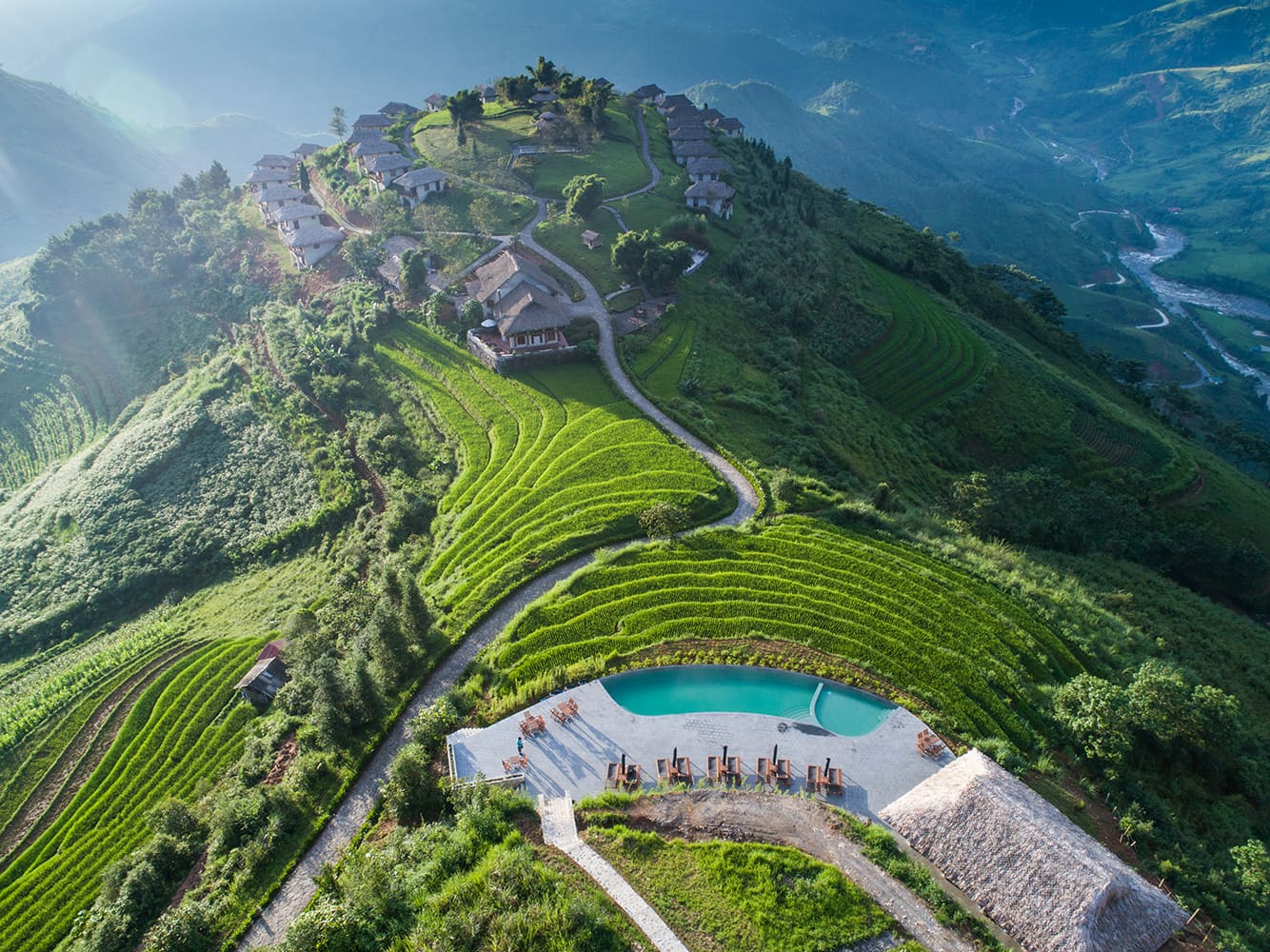
Deep in the valleys forged by the waters of Asia's Red River, a series of colorful mountain villages are encircled by fields of towering rice terraces. The fields are agricultural feats of precision — rugged mountains blanketed with emerald stairways that, seemingly, ascend to the heavens above.
Mu Cang Chai, Vietnam.
Ratnakorn Piyasirisorost
But this is not Disneyland. This isn't a destination designed to attract visitors, international attention or the Instagram set.
Centuries ago, the ancestors of Northern Vietnam's local hill tribes created this place of practicality and profound beauty for the most basic of reasons — to survive.
Rice terraces cover 2,200 hectares of land in Mu Cang Chai.
Frans Sellies
Rice thrives in water-logged conditions, making it ideal for the flooded Mekong Delta at the country's southern tip. To grow rice in vertical conditions, hill tribes created a terraced system to control the downward flow of water. Using ingenuity, resourcefulness and sheer grunt work, fertile fields of sustenance and breathtaking beauty were born — and still flourish today.
In total, rice terraces cover more than 2,200 hectares of land in Mu Cang Chai, of which 500 were designated as national heritage sites by Vietnam's Ministry of Culture, Sports and Tourism in 2007.
The Vietnamese H'mong people tend the rice terraces created by their ancestors centuries ago.
Kiatanan Sugsompian
That land is shared by the three villages — La Pan Tan, Che Cu Nha and De Xu Phinh — and are must-see spots for any traveler in the region.
Where to stay
Home to some 42,000 people, Mu Cang Chai is largely rural. The countryside is dotted with rustically authentic guesthouses and homestays.
One example is Indigenous Homestay, Mu Cang Chai's top-ranked accommodation on TripAdvisor which boasts 25 "excellent" and two "good" reviews — no others — for the bargain price of $9 a night.
Mu Cang Chai Ecolodge offers more creature comforts. Built in 2017, the ecolodge consists of seven stilted houses and arranges two-to-four day tours of the area, which include planting or harvesting of the rice terraces alongside local inhabitants.
Topas Ecolodge.
Courtesy of Topas Ecolodge
For travelers moving westward to Sapa, the Topas Ecolodge offers 33 stone bungalows, two restaurants, a lounge, pool bar and spa. It's also part of the National Geographic Unique Lodges of the World, which the company defines as "lodges that invite guests to discover some of the planet's most treasured places, while helping to protect those places for generations to come."
What to do
Trekking is popular, as is cycling and photography.
"The specialty is trekking through amazing rice terraces to see ethnic minorities, such as Thai, H'Mong and Red Dzao hill tribes, while enjoying authentic local meals harvested directly from farm to your plate," said Tran Thuy Hai, director of Travel at Topas Travel Vietnam.
Photographer tours are popular in Mu Cang Chai.
Kiatanan Sugsompian
She added that motorbiking is a favorite activity, mostly for backpackers and younger travelers, due to the quality of the roads and dirt tracks, though Topas doesn't encourage it for safety reasons.
Topas Ecolodge can arrange four to 10-day trips of the region. She said tours can be tailored to suit all types of travelers from extreme adventurers to relaxing family trips with kids.
Trekking with Topas Ecolodge.
Courtesy of Topas Ecolodge
Festivals attract record numbers of tourists every year, including an autumn paragliding festival that's helping to establish Mu Cang Chai as a new destination for adventure travel.
Other popular activities include traversing the breathtaking Khau Pha Pass and exploring the Mo Waterfall and Pu Nhu Waterfall.
Getting to Yen Bai province
If Vietnam resembles an upright cobra — or a capital "S" — then the Yen Bai province is near the eye of the snake. The district of Mu Cang Chai, located 215 miles northwest of Hanoi, is located in the province's eastern corner.
Mu Cang Chai in Yen Bai, Vietnam.
Sumith Nunkham
Located between — and not geographically far from — Hanoi and the popular trekking town of Sapa, Mu Cang Chai is not necessarily easy to reach. The trip can take around seven hours, or longer, to reach from Hanoi.
Most travelers travel via train, bus or private transport — or a combination of those options.
When to go
It is said there is never a bad season to see Mu Cang Chai, as the rice terraces are beautiful year-round.
In the spring, near-neon shades of green arise as the seedlings sprout from the water. In the warm summer months, brilliant green terraces fill the countryside with bursts of color.
The slopes transform into seas of gold during the autumn harvest period. And in late winter, shimmering ponds are suspended along the mountain slopes, awaiting the birth of next year's crop.
The golden hues of harvest in Mu Cang Chai.
MeogiaPhoto
In line with increasing tourism numbers to Vietnam as a whole, the Vietnam News Agency estimates Mu Cang Chai received 90,000 visitors in 2018 — compared to just 20,000 in 2015.
As such, local authorities are looking into ways to protect the local ethnic groups, while raising environmental and ecotourism awareness.
Read More
